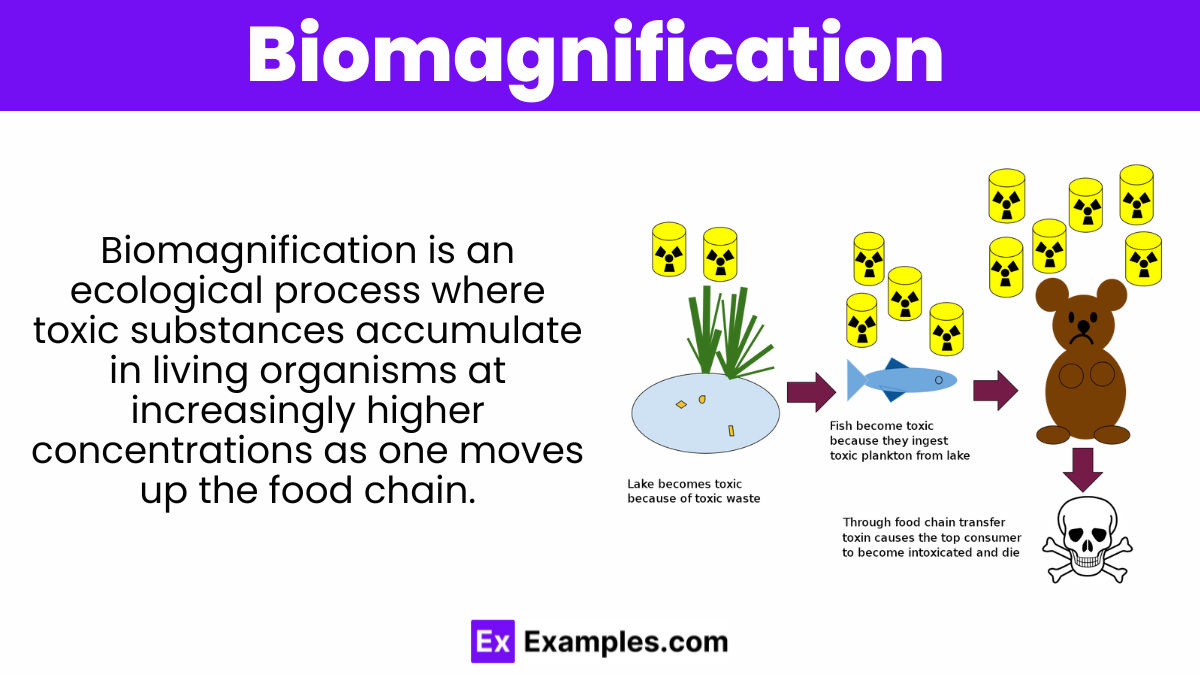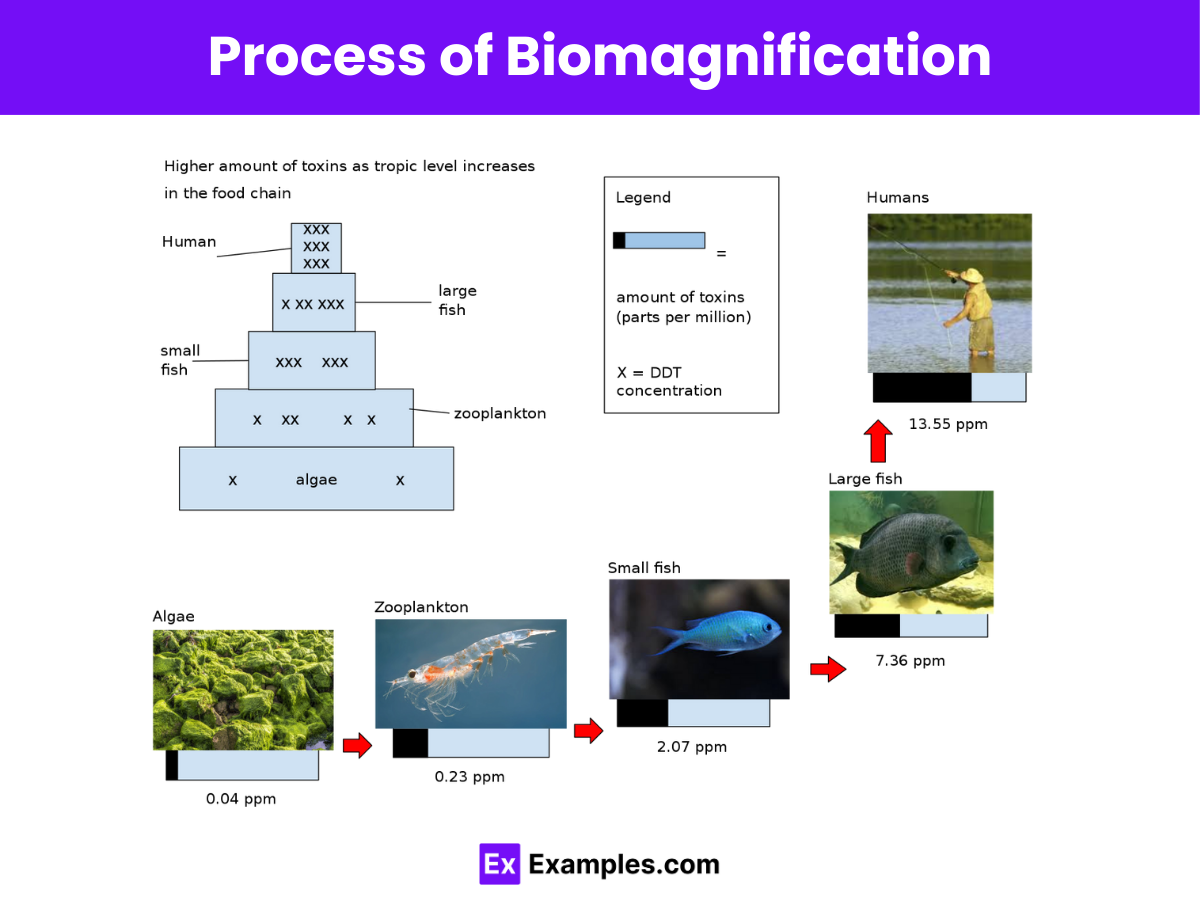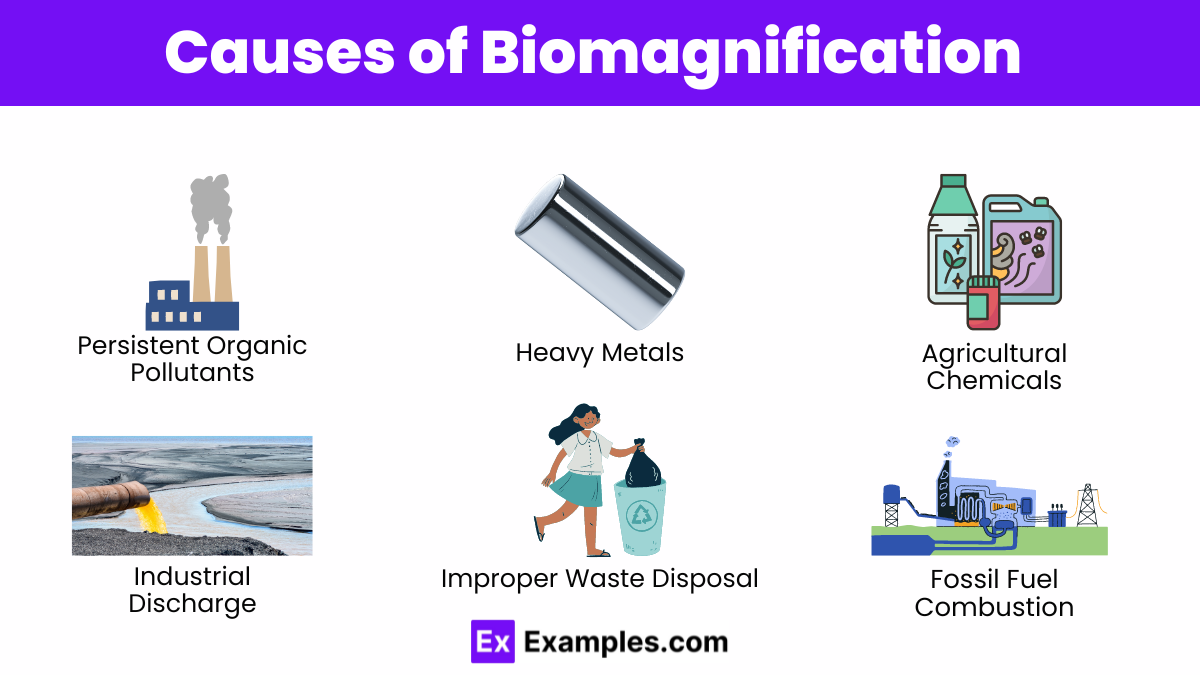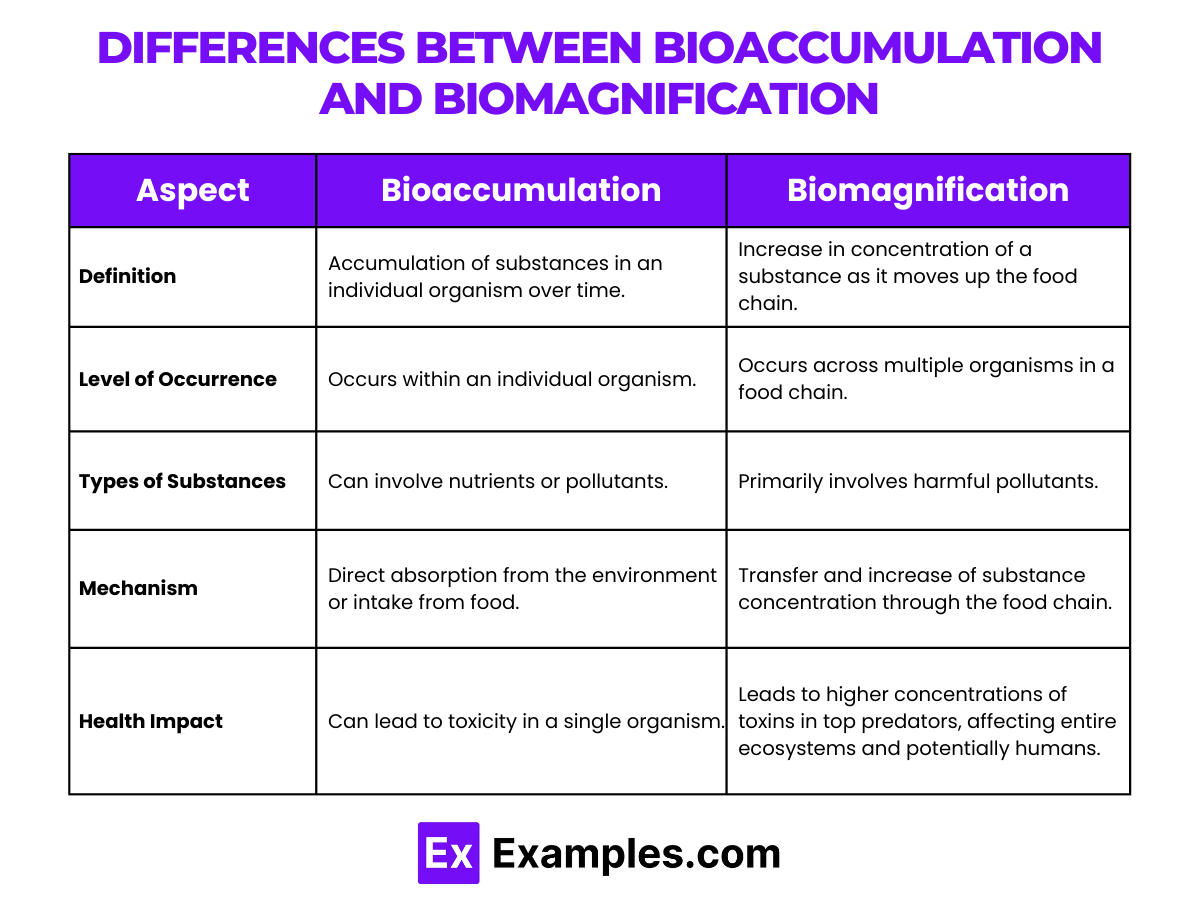Which of the following best defines biomagnification?
The increase in pesticide use over time
The increase in concentration of toxic substances in organisms at higher trophic levels
The process of eliminating toxins from an ecosystem
The decrease in concentration of substances in organisms at higher trophic levels






